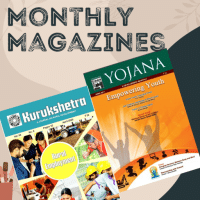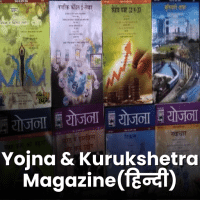Current Affairs Exam > Current Affairs Questions > The 17th-century Persian language text Mirat-...
Start Learning for Free
The 17th-century Persian language text Mirat-i-Masudi, written by:
- a)Nizami Ganjavi
- b)Abdur Rahman Chishti
- c)Saadi Shirazi
- d)Omar Khayyam
Correct answer is option 'B'. Can you explain this answer?
Most Upvoted Answer
The 17th-century Persian language text Mirat-i-Masudi, written by:a)Ni...
Prime Minister Modi will lay the foundation stone of Maharaja Suheldev Memorial on 16th February 2021.
- The event in Bahraich, Uttar Pradesh marks the birth anniversary of Maharaja Suheldev.
- Suhaldev or Suheldev was an Indian king from Shravasti, popularly known to have defeated and killed the Ghaznavid general Ghazi Saiyyad Salar Masud at Bahraich in 1034 CE.
- He is mentioned in the 17th-century Persian-language historical romance Mirat-i-Masudi written by Abd-ur-Rahman Chishti during the reign of the Mughal emperor Jahangir.
- Since the 20th century, various Hindu nationalist groups have characterized him as a Hindu King who defeated a Muslim invader.
Free Test
FREE
| Start Free Test |
Community Answer
The 17th-century Persian language text Mirat-i-Masudi, written by:a)Ni...
The Mirat-i-Masudi: A 17th-century Persian Language Text
The correct answer is option 'B': Abdur Rahman Chishti.
Introduction
The Mirat-i-Masudi is a Persian language text that was written in the 17th century. It is a significant literary work that provides insights into the culture, history, and society of the time period. The author of this text is Abdur Rahman Chishti.
About Abdur Rahman Chishti
Abdur Rahman Chishti was a Persian poet and writer who lived during the 17th century. He was born in Chisht, a town located in present-day Afghanistan. Chishti was known for his expertise in Persian literature and his contributions to the field of poetry.
The Mirat-i-Masudi
The Mirat-i-Masudi is one of the notable works of Abdur Rahman Chishti. It is a Persian language text that provides a detailed account of various aspects of Persian society during the 17th century. The text covers a wide range of topics including history, culture, religion, and social customs.
Importance and Significance
The Mirat-i-Masudi is considered an important historical document as it offers valuable insights into the society and culture of the time. It provides a glimpse into the lives of people during the 17th century and sheds light on their customs, traditions, and daily lives.
Style and Content
The text is written in a descriptive and narrative style, making it an engaging read for those interested in Persian literature and history. It covers various aspects of Persian society, including the ruling classes, religious institutions, social hierarchy, and the daily lives of common people.
Legacy
Abdur Rahman Chishti's work, including the Mirat-i-Masudi, has had a lasting impact on Persian literature and historical studies. His contributions to the field have been recognized and appreciated by scholars and researchers, who continue to study and analyze his works to gain a deeper understanding of Persian history and culture.
In conclusion, the 17th-century Persian language text, Mirat-i-Masudi, was written by Abdur Rahman Chishti. This text holds great significance as it provides valuable insights into Persian society and culture during that time period.
The correct answer is option 'B': Abdur Rahman Chishti.
Introduction
The Mirat-i-Masudi is a Persian language text that was written in the 17th century. It is a significant literary work that provides insights into the culture, history, and society of the time period. The author of this text is Abdur Rahman Chishti.
About Abdur Rahman Chishti
Abdur Rahman Chishti was a Persian poet and writer who lived during the 17th century. He was born in Chisht, a town located in present-day Afghanistan. Chishti was known for his expertise in Persian literature and his contributions to the field of poetry.
The Mirat-i-Masudi
The Mirat-i-Masudi is one of the notable works of Abdur Rahman Chishti. It is a Persian language text that provides a detailed account of various aspects of Persian society during the 17th century. The text covers a wide range of topics including history, culture, religion, and social customs.
Importance and Significance
The Mirat-i-Masudi is considered an important historical document as it offers valuable insights into the society and culture of the time. It provides a glimpse into the lives of people during the 17th century and sheds light on their customs, traditions, and daily lives.
Style and Content
The text is written in a descriptive and narrative style, making it an engaging read for those interested in Persian literature and history. It covers various aspects of Persian society, including the ruling classes, religious institutions, social hierarchy, and the daily lives of common people.
Legacy
Abdur Rahman Chishti's work, including the Mirat-i-Masudi, has had a lasting impact on Persian literature and historical studies. His contributions to the field have been recognized and appreciated by scholars and researchers, who continue to study and analyze his works to gain a deeper understanding of Persian history and culture.
In conclusion, the 17th-century Persian language text, Mirat-i-Masudi, was written by Abdur Rahman Chishti. This text holds great significance as it provides valuable insights into Persian society and culture during that time period.

|
Explore Courses for Current Affairs exam
|

|
Similar Current Affairs Doubts
The 17th-century Persian language text Mirat-i-Masudi, written by:a)Nizami Ganjavib)Abdur Rahman Chishtic)Saadi Shirazid)Omar KhayyamCorrect answer is option 'B'. Can you explain this answer?
Question Description
The 17th-century Persian language text Mirat-i-Masudi, written by:a)Nizami Ganjavib)Abdur Rahman Chishtic)Saadi Shirazid)Omar KhayyamCorrect answer is option 'B'. Can you explain this answer? for Current Affairs 2025 is part of Current Affairs preparation. The Question and answers have been prepared according to the Current Affairs exam syllabus. Information about The 17th-century Persian language text Mirat-i-Masudi, written by:a)Nizami Ganjavib)Abdur Rahman Chishtic)Saadi Shirazid)Omar KhayyamCorrect answer is option 'B'. Can you explain this answer? covers all topics & solutions for Current Affairs 2025 Exam. Find important definitions, questions, meanings, examples, exercises and tests below for The 17th-century Persian language text Mirat-i-Masudi, written by:a)Nizami Ganjavib)Abdur Rahman Chishtic)Saadi Shirazid)Omar KhayyamCorrect answer is option 'B'. Can you explain this answer?.
The 17th-century Persian language text Mirat-i-Masudi, written by:a)Nizami Ganjavib)Abdur Rahman Chishtic)Saadi Shirazid)Omar KhayyamCorrect answer is option 'B'. Can you explain this answer? for Current Affairs 2025 is part of Current Affairs preparation. The Question and answers have been prepared according to the Current Affairs exam syllabus. Information about The 17th-century Persian language text Mirat-i-Masudi, written by:a)Nizami Ganjavib)Abdur Rahman Chishtic)Saadi Shirazid)Omar KhayyamCorrect answer is option 'B'. Can you explain this answer? covers all topics & solutions for Current Affairs 2025 Exam. Find important definitions, questions, meanings, examples, exercises and tests below for The 17th-century Persian language text Mirat-i-Masudi, written by:a)Nizami Ganjavib)Abdur Rahman Chishtic)Saadi Shirazid)Omar KhayyamCorrect answer is option 'B'. Can you explain this answer?.
Solutions for The 17th-century Persian language text Mirat-i-Masudi, written by:a)Nizami Ganjavib)Abdur Rahman Chishtic)Saadi Shirazid)Omar KhayyamCorrect answer is option 'B'. Can you explain this answer? in English & in Hindi are available as part of our courses for Current Affairs.
Download more important topics, notes, lectures and mock test series for Current Affairs Exam by signing up for free.
Here you can find the meaning of The 17th-century Persian language text Mirat-i-Masudi, written by:a)Nizami Ganjavib)Abdur Rahman Chishtic)Saadi Shirazid)Omar KhayyamCorrect answer is option 'B'. Can you explain this answer? defined & explained in the simplest way possible. Besides giving the explanation of
The 17th-century Persian language text Mirat-i-Masudi, written by:a)Nizami Ganjavib)Abdur Rahman Chishtic)Saadi Shirazid)Omar KhayyamCorrect answer is option 'B'. Can you explain this answer?, a detailed solution for The 17th-century Persian language text Mirat-i-Masudi, written by:a)Nizami Ganjavib)Abdur Rahman Chishtic)Saadi Shirazid)Omar KhayyamCorrect answer is option 'B'. Can you explain this answer? has been provided alongside types of The 17th-century Persian language text Mirat-i-Masudi, written by:a)Nizami Ganjavib)Abdur Rahman Chishtic)Saadi Shirazid)Omar KhayyamCorrect answer is option 'B'. Can you explain this answer? theory, EduRev gives you an
ample number of questions to practice The 17th-century Persian language text Mirat-i-Masudi, written by:a)Nizami Ganjavib)Abdur Rahman Chishtic)Saadi Shirazid)Omar KhayyamCorrect answer is option 'B'. Can you explain this answer? tests, examples and also practice Current Affairs tests.

|
Explore Courses for Current Affairs exam
|

|
Signup for Free!
Signup to see your scores go up within 7 days! Learn & Practice with 1000+ FREE Notes, Videos & Tests.


























